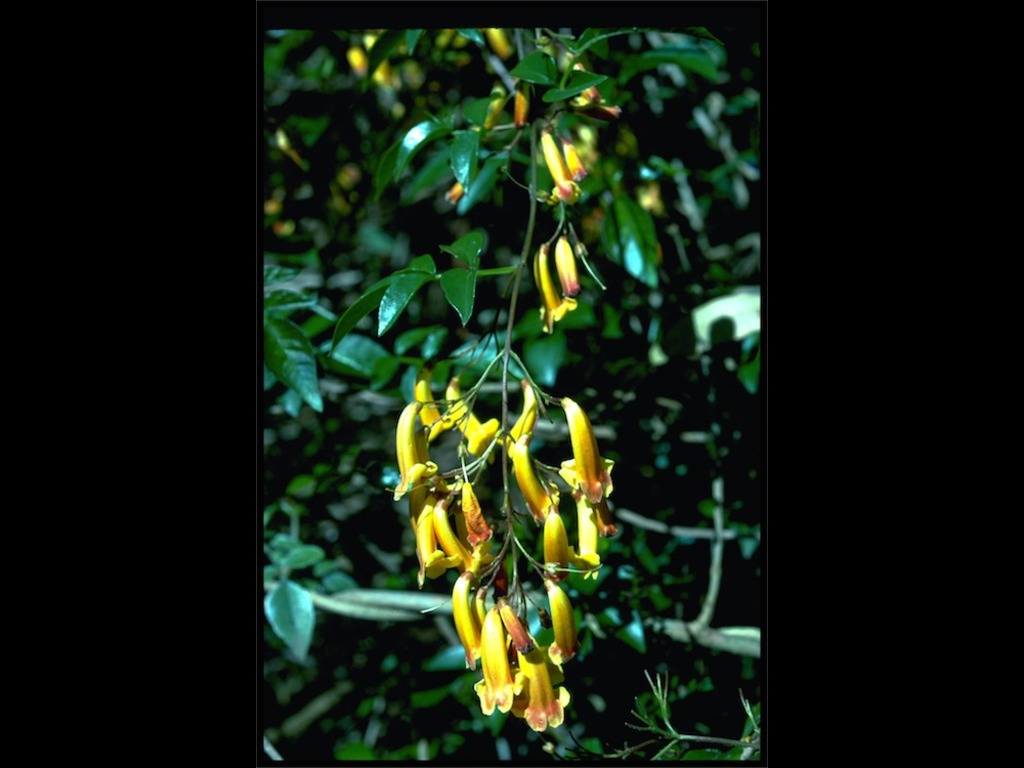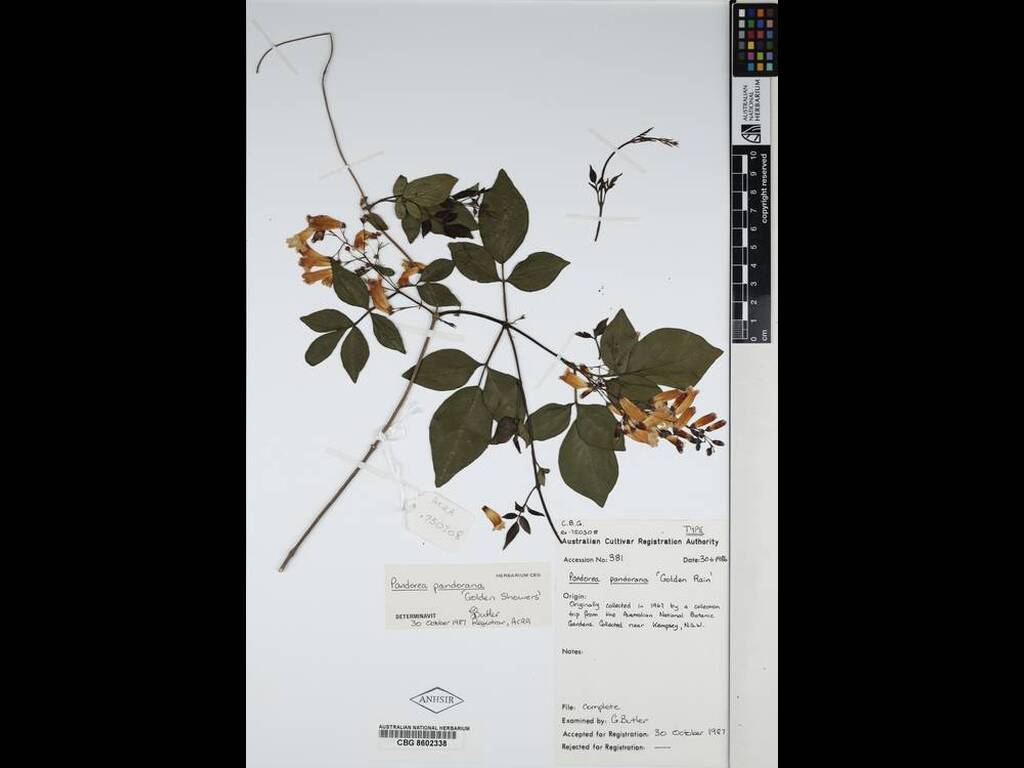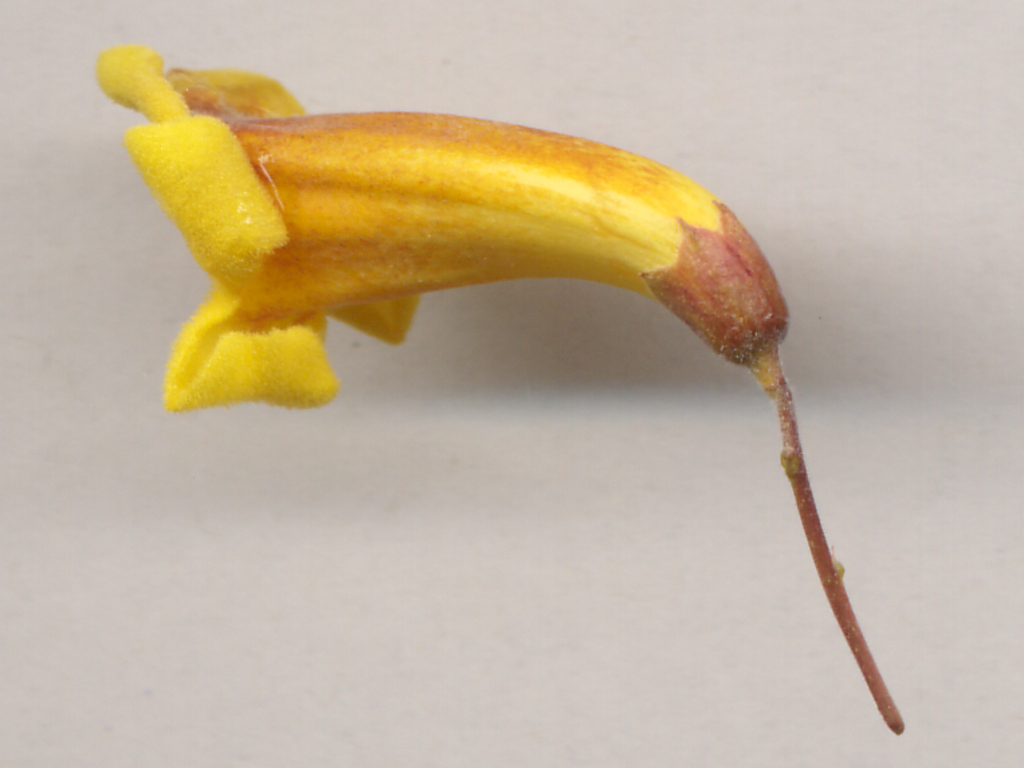Pandorea pandorana 'Golden Showers'
- File Number
- 381
- ACRA Field Book Number
- 221
- Registration Date
- 29/10/1987
- Application Received
- 01/06/1986
- Family
- Bignoniaceae
- Cultivar Name
- Pandorea pandorana 'Golden Showers'
- Origin
- Pandorea 'Golden Showers' was originally selected by a field collection team from the Australian National Botanic Gardens in 1967. The selection was made from a naturally occurring plant of Pandorea pandorana near Kempsey, NSW. The name refers to 1) the weeping racemes of flowers and 2) to the spent flowers that fall to the ground as the flowering season finishes. The cultivar was first received by the Authority in June 1986. Registration applied for by the Australian National Botanic Gardens, P.O.Box 1777, Canberra 2601.
- Characteristics
- Note: Formerly Pandorea 'Golden Rain' Pandorea pandorana is a vigorous woody climber with glossy pinnate leaves consisting of 5 to 9 leaflets. The flowers are massed on pendulous inflorescences. Pandorea 'Golden Showers' is a golden flowered selection of the species, Diagnosis: Pandorea 'Golden Showers' can be distinguished by the flower colour which is a rich golden brown.
- Cultivation
- This cultivar has been grown at the Australian National Botanic Gardens for nearly twenty years. It has performed well in cultivation, bearing masses of flowers from July to October. As with other forms of the species, it performs better in richer soils that are moist all year round. Plants develop to their maximum potential in shaded to semi-shaded positions. As with other forms of P. pandorana, it is slightly frost tender so overhead protection is required in areas that experience heavy frost. It can be used as a scrambling plant but is best displayed if used as a climber. It does have a constrictive liana-like habit and should be used with caution around younger, developing trees. The cultivar must be grown by vegetative means to ensure retention of the cultivar features.
- Publication
- Wrigley, J.W. & Fagg, M. (1988), Australian Native Plants: propagation, cultivation and use in landscaping Edn. 3: 470
- Colour Coding
- RHS Colour Code 1966.perianth: Yellow-orange group 14A.
- Propagation
- Cuttings from semi-firm new growth
- Applicant Name
- ANBG,Canberra.
- Uses
- Climber with spectacular flowering displays
- Availability
- Unknown
- ANBG Accession Numbers
- ACC381; ACRA221/293; CBG750308/8602338/8802296.
- NSL ID
- -


